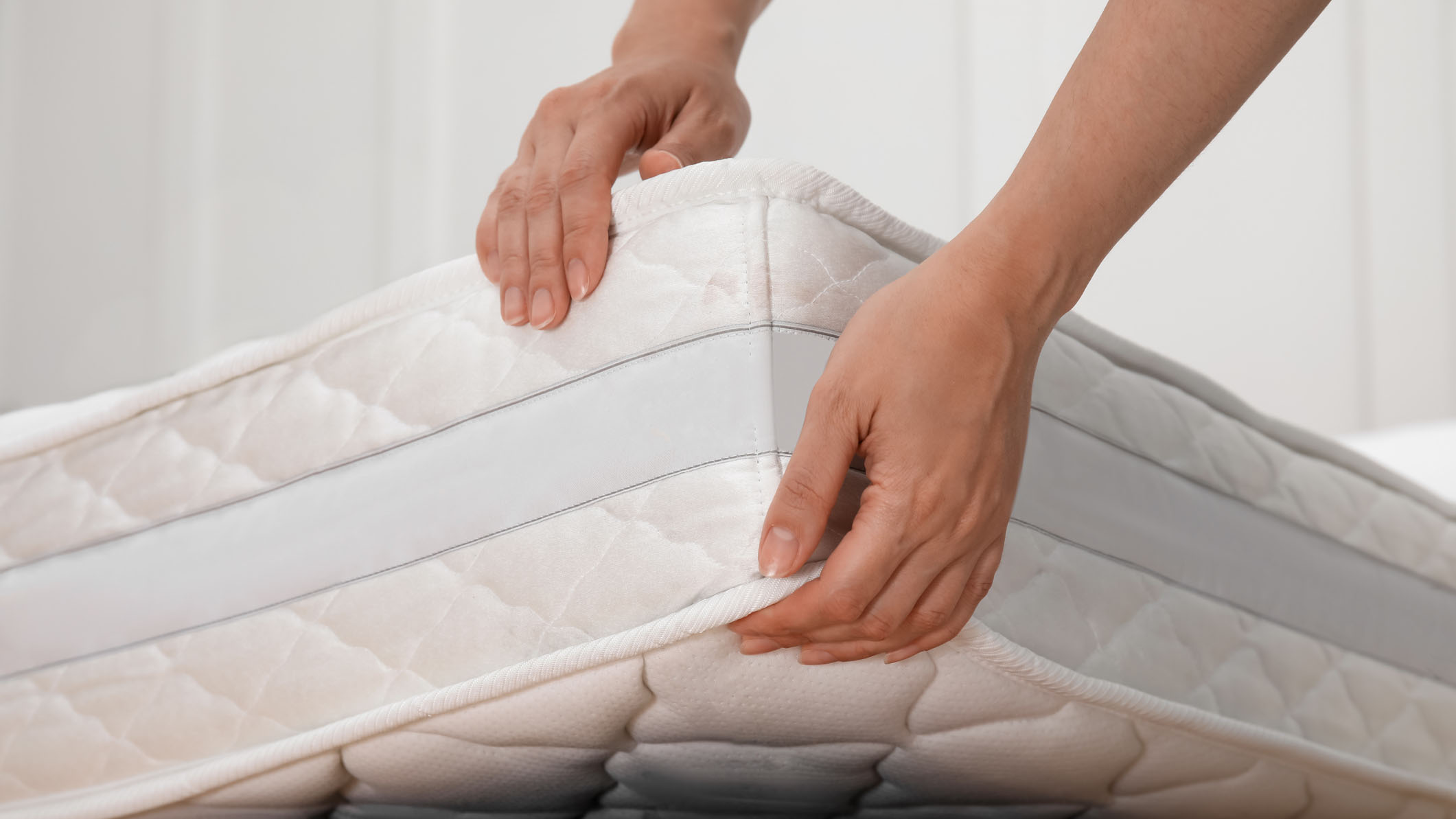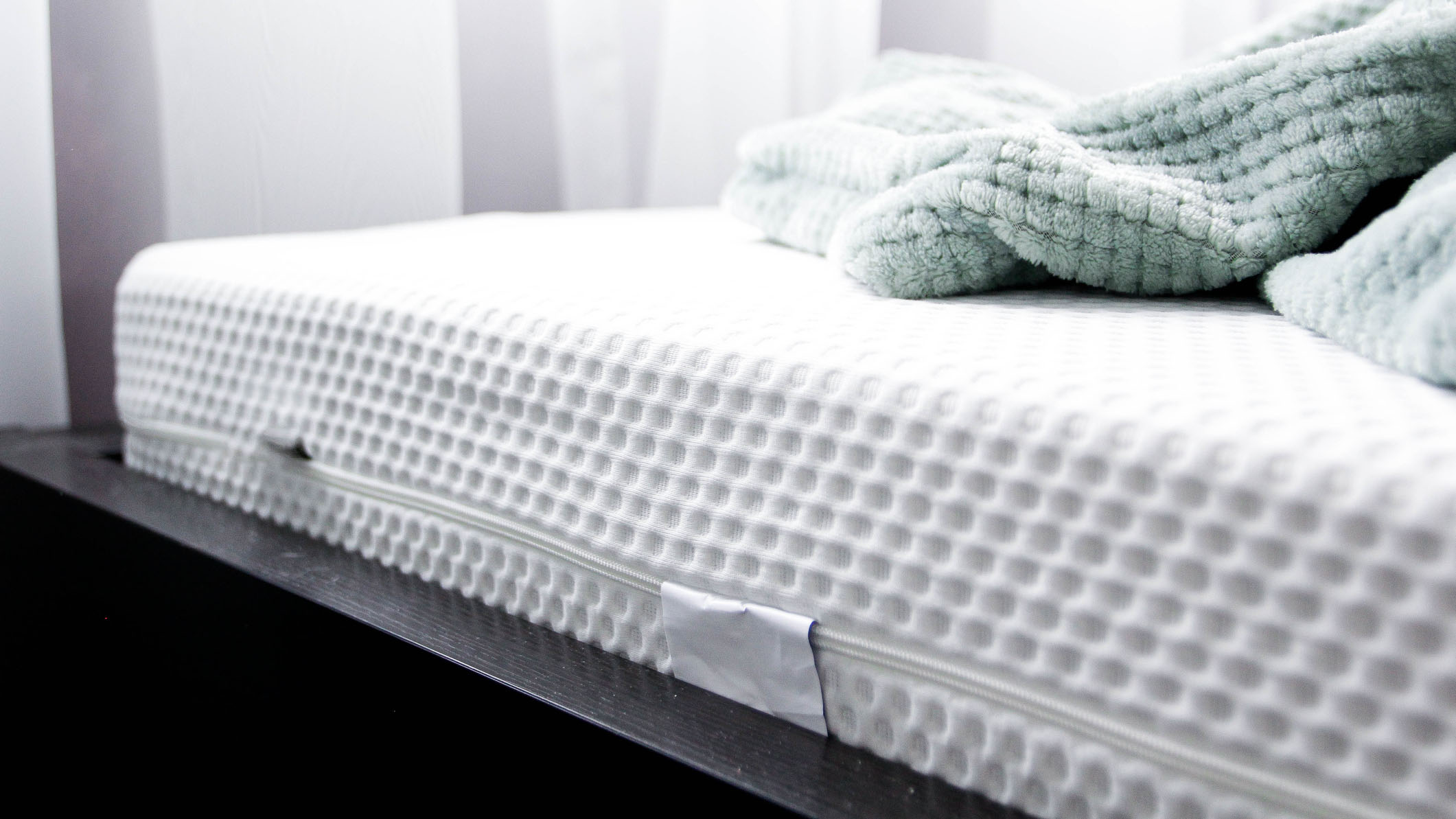When you’re hunting for a new bed in Black Friday mattress sales, there are many benefits you’ll be looking out for: huge discounts, lifetime warranties, maybe even state-of-the-art cooling technology. While comfort and price are big deciding factors when choosing the best mattress for you, materials are also important. Some cheaper materials in mattresses are not as safe as their more expensive alternatives, and one cost-effective mattress material is notorious for its risks: fiberglass.
From Casper to Nectar, many of the best mattress in a box brands have been questioned over their alleged use fiberglass. But what is fiberglass, why is it used in mattresses, and how can you tell if fiberglass is in your mattress?
Here we give you the lowdown on fiberglass and whether it’s dangerous or not. We’ll also explain how to tell if your mattress contains fiberglass.
What does fiberglass look like on a mattress?
Fiberglass is a synthetic material made from glass and reinforced plastic, and is commonly used as wall insulation. It looks like thin, translucent straw or cotton candy. This composite material is commonly woven into mattress covers and all-foam beds, though many of today’s best memory foam mattresses do not contain fiberglass. Fiberglass is also used in some mattress toppers, especially foam ones.
Why is fiberglass used in mattresses?
Mattresses are flammable – especially memory foam beds – so brands must ensure that their mattresses contain a flame retardant (a substance that prevents a fire outbreak). Fiberglass is a cheap flame retardant, which is why its used in some mattresses – usually budget beds.
Fiberglass works like a protective barrier that stops mattresses from bursting into flames if they catch fire. Instead, a mattress containing fiberglass would melt. There are standards that must be met before a mattress with fiberglass is considered safe though, and these are set out in the Consumer Product Safety Commission’s Standard For The Flammability of Mattress Sets.
Is fiberglass in mattresses dangerous?
While fiberglass is a cheap, durable flame barrier, it’s controversial for many reasons. It’s buried inside your mattress, underneath the cover, for a reason. If the mattress cover gets removed, damaged or wears thin, this can leave the fiberglass exposed. If you accidentally touch it, it can make your skin very itchy and blistered, and can even make you break out in a rash or hives.
Inhaling fiberglass can also lead to inflammatory respiratory conditions such as bronchitis, while long-term exposure has been linked to lung disease. If fiberglass escapes your mattress it’s very difficult to clean up as it gets everywhere – from clothes to carpets. You would need the help of a professional cleaning company.
However, as long as the fiberglass stays where it belongs – out of sight and inside the mattress – it will not pose a danger to your health or your home.
How to know if your mattress has fiberglass inside
The only way to see fiberglass in a mattress is by removing or damaging the cover, which is big no-no as doing so will expose you and your home to fiberglass. So you have to rely on other ways to detect whether your mattress contains fiberglass.

These are signs that your mattress contains fiberglass:
- Price: First of all, look at the price tag. If the MSRP (original, full retail price) of the mattress is really cheap, it’s likely they used the cost-cutting flame barrier.
- Tag or label: Sometimes, the label will mention that it contains fiberglass.
- Alternative terms: Some brands refer to fiberglass as “glass wool”, “silica”, and “glass fiber” to avoid explicitly saying they use fiberglass.
- The website or care manual: The company’s website will sometimes list the materials they used as a flame barrier. If you bought the mattress a while ago and haven’t kept the manual, check the mattress label for the model name and product number. You can then use the name and number to search online for the mattress’s care manual – which may mention whether the mattress uses fiberglass or not.
- No mention of fiberglass: This advice sounds counter-intuitive, but it’s important to remember that mattress brands who don’t use fiberglass, such as Saatva and Bear Mattress, will take every opportunity to boast about the fact that they don’t use fiberglass. If a company avoids telling you what they use as flame retardant, be on your guard.
- It’s memory foam: While not all memory foam mattresses contain fiberglass, they are more likely to. Some beds advertised as memory foam actually use cheaper polyfoam instead, which contains fiberglass.
What to do if there’s fiberglass in your mattress
If you’re mattress has fiberglass, there’s no need to panic. Fiberglass is only a problem if the cover is removed or damaged and the fiberglass is exposed. As long as the material stays in the mattress, it won’t pose a risk.
To ensure the fiberglass stays where it belongs, look after the cover on your mattress. Keep it away from sharp items or anything that could cause it to split open, including pets who may want to chew it. We also recommend covering it with one of the best mattress protectors for all beds, and possibly a fiberglass-free mattress topper too for a belts-and-braces approach.
Should you buy a new mattress?
If you’ve had your mattress for over eight years, you should probably replace it anyway as this is how long a mattress lasts on average, unless it’s a premium latex mattress – they can last double as long.
However, if you’ve only had your mattress for a few years or even months – or simply don’t have the means to replace your old bed right now – it doesn’t mean you have to rush out and buy a new bed. Remember: fiberglass is only a health risk if you remove or damage the mattres cover, so look after the cover by not allowing any sharp object near it or a pet who might claw or chew it.
That said, if you do feel that it’s time to retire your mattress, these are our three favorite fiberglass-free mattresses to buy online:
Our three favorite fiberglass-free mattresses
Credit: Source link
